A new fund will help the Agnes Etherington Art Centre discover the history behind some of its most important artifacts in order to guide future collection building.
The Dodge Family Indigenous Art Collection Research Fund has been established with a generous donation from Chancellor Emeritus David Dodge, Arts’65, LLD’02, and his wife, Christiane, Arts’65, to support the gallery in developing a strategy to grow its Indigenous art collection as a powerful asset for research and learning at the university and to encourage fellow alumni, friends, and faculty to support Indigenous arts at Queen’s.
“Our Indigenous art collection has accrued over a long period, and as a result, it’s quite eclectic,” says Agnes Director Jan Allen. “Our knowledge about the collection is uneven. Some of the pieces we know a lot about, others very little. Research must be done to ascertain cultures of origin and materials.”
Alicia Boutilier, Chief Curator and Curator of Canadian Historical Art, says the fund will allow the Agnes to connect with communities where objects originated, including Inupiaq, Yupik, and Athabascan communities of the northwestern subarctic region.
“We are inviting knowledge keepers from that region to work with us to review and engage with the objects to give us a better understanding of what we have that’s beyond a typical museum record,” says Ms. Boutilier. “With that knowledge, we’ll have a better sense of how to move forward — what we can exhibit, how we can expand it, how we can display it, how we can even store it.”

An example of the knowledge the gallery is aiming to expand upon was realized when the internationally renowned Northwest Coast Git Hayetsk Dancers visited the collection prior to their performance at the Isabel Bader Centre for the Performing Arts in 2016.
During their visit, one of the artists, Mique’l Dangeli, discovered a frontlet — a headpiece made from wood, paint, abalone shell, metal, and hide — made by a Kwakwaka'wakw or Ts’msyan (Tsimshian) artist she believed originated from her people. She shared that, in her culture, a frontlet is used in ceremonial dance and worked with the gallery to incorporate it into their performance. With the help of conservator Amandina Anastassiades, students in the Master of Art Conservation program constructed a cradle to ensure the piece would be protected during the event.
“We were especially interested in Mique’l Dangeli’s knowledge about the traditional use of the piece — which she described as a cultural being — given we had very little information,” says Ms. Allen.
In addition to cultural insights, the Agnes will consult with a range of experts to define its goals in relation to its Indigenous art collection. This will include developing a strategy to assess potential acquisitions with research and learning in mind.
“The addition of this fund will bring us access to extraordinary expertise to advance our collection in tandem with the growth across campus of Indigenous studies and the Truth and Reconciliation Commission Task Force Implementation,” says Ms. Allen. “We need to discern where these welcome resources will be placed to ensure our work is sensitive and well-informed.”
The Dodges say their intention is to support that growing knowledge with the creation of the fund.
“Other Canadian, European and, to some extent, Inuit art has been looked at more closely and the knowledge about it has been developed over time,” says Christiane Dodge. “But, as far as I know, not that much knowledge is available about Indigenous art. It’s about time the University and the rest of the world looked at that. We hope that others will join in supporting this fund.”
Ms. Allen says the creation of a fund is timely.
“A gift like the Dodges’ is especially exciting because it meets the demands of the moment,” she says. “We’re at a time where, in order to move ahead, we need to cultivate the knowledge and participation of specific communities and there’s a cost associated with that. This is a visionary gift.”
For more information on The Dodge Family Indigenous Art Collection Research Fund or to donate, visit this page.


